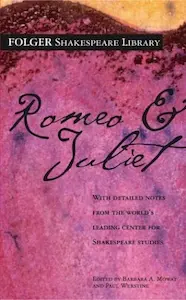Romeo and Juliet - Summary
William Shakespeare

Introduction
William Shakespeare’s tragic play, “Romeo and Juliet,” is a timeless masterpiece that explores the power of love and the consequences of feuding families. Set in Verona, Italy, during the Renaissance period, the story follows the ill-fated love affair between Romeo Montague and Juliet Capulet. Through vivid characterization, poetic language, and dramatic plot twists, Shakespeare captivates readers with a tale of passion, loyalty, and sacrifice.
The Montagues and the Capulets: A Feud That Defines
The play opens with a prologue, which sets the stage for the tragic events to unfold. The city of Verona is divided by a long-standing feud between two noble families, the Montagues and the Capulets. This bitter rivalry permeates every aspect of society, leading to violence and bloodshed.
Love at First Sight: Romeo and Juliet’s Forbidden Love
One of the most iconic aspects of “Romeo and Juliet” is the passionate love shared between the young protagonists. Romeo, a Montague, and Juliet, a Capulet, meet by chance at a masquerade ball and instantly fall in love. Despite knowing the consequences of their forbidden love, they are unable to resist their deep connection.
The Balcony Scene: A Testament to Love’s Power
The famous balcony scene in Act II, Scene II is a pivotal moment in the play. Romeo, hiding in the Capulet’s orchard, overhears Juliet expressing her love for him from her balcony. This scene showcases Shakespeare’s mastery of language as Romeo and Juliet exchange poetic declarations of love, using metaphors and imagery to convey their emotions.
Friar Lawrence: A Catalyst for Tragedy
Friar Lawrence, a wise and well-intentioned Franciscan friar, plays a significant role in the play. He agrees to marry Romeo and Juliet secretly, hoping to end the feud between their families. However, his plans go awry when a series of unfortunate events leads to the untimely deaths of the young lovers. Friar Lawrence’s misguided actions ultimately contribute to the tragic outcome.
Mercutio: A Colorful Character
Mercutio, Romeo’s loyal friend, provides comic relief and serves as a contrast to the intense emotions displayed by the main characters. Known for his wit and wordplay, Mercutio’s untimely death in a duel with Juliet’s cousin, Tybalt, marks a turning point in the play. His death sets off a chain of events that leads to the tragic conclusion.
Fate and Destiny: A Driving Force
Throughout the play, Shakespeare explores the theme of fate and its role in the characters’ lives. The chorus, in the prologue, foreshadows the tragic outcome, suggesting that Romeo and Juliet are “star-crossed lovers.” This notion of predetermined destiny adds a sense of inevitability to the unfolding events, highlighting the powerlessness of the characters against their own fate.
The Tragic Ending: Love and Loss
As the play reaches its climax, Romeo and Juliet’s love is tested by a series of unfortunate events. Miscommunication, mistaken identities, and impulsive actions lead to a chain of tragic consequences. The deaths of Mercutio, Tybalt, and Paris further fuel the escalating tensions between the Montagues and the Capulets. In a desperate attempt to be together, Romeo and Juliet devise a plan that ultimately ends in their own untimely deaths.
Lessons Learned: Love, Loyalty, and Forgiveness
“Romeo and Juliet” offers valuable lessons about the power of love, loyalty, and forgiveness. The play reminds us of the destructive nature of hatred and the importance of overcoming societal divisions. Shakespeare’s portrayal of the young lovers’ unwavering commitment to each other serves as a reminder that love can transcend all obstacles, even in the face of tragedy.
Impact and Legacy: Romeo and Juliet in Popular Culture
Over the centuries, “Romeo and Juliet” has remained a beloved and influential work of literature. Its themes and characters have been adapted and reimagined countless times in various art forms, including theater, film, and music. The play’s enduring popularity is a testament to its universal appeal and its ability to resonate with audiences across generations.
Conclusion
In conclusion, “Romeo and Juliet” is a timeless classic that continues to captivate readers with its exploration of love, fate, and the consequences of hatred. Shakespeare’s masterful storytelling, vivid characters, and poetic language make this play a must-read for anyone seeking a powerful and thought-provoking literary experience. Through the tragic tale of Romeo and Juliet, Shakespeare reminds us of the enduring power of love and the devastating consequences of unchecked animosity.